TEXT AND PHOTOGRAPHS BY KABIR GHOSH
Gurgaon, Haryana
My great-grandmother, Sudha Rani Basu, was born in a small village called Boala (now in Bangladesh). Her exact date of birth was not recorded. She was born in a zamindar house which owned the village. She was married off at a young age to my great grandfather Umaprasanna Basu and started her new life with him in Calcutta. I do not know much about her except that she was a very soft spoken and caring lady.
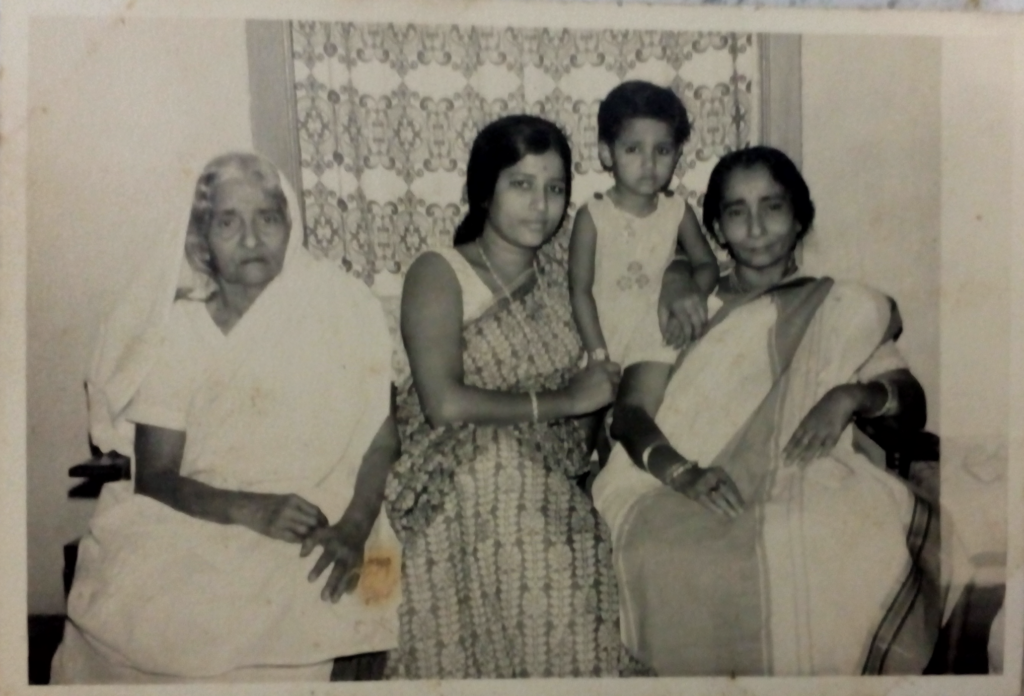
She possessed many aged utensils and other heirlooms, which were distributed among her four daughters as a part of their trousseaus during their weddings and some after her death. This is how my paternal grandmother, Mamata Ghosh, the third daughter got her share of her mother’s belongings. These include a shivling, an abstract or aniconic representation of the Hindu Lord Shiva; a picture of goddess Durga, an oil lamp stand called pilshuj, a paan box, a kamandulu, a pot with a spout used for containing water from the river Ganga for rituals, a soot container called Kajol Lota, stone utensils and kantha blankets made by my great grandmother’s mother. The pilshuj, kamandulu and shivling had been passed down from ancestors whereas the pan box, kajol lota and stone utensils were bought by my great great grandmother.
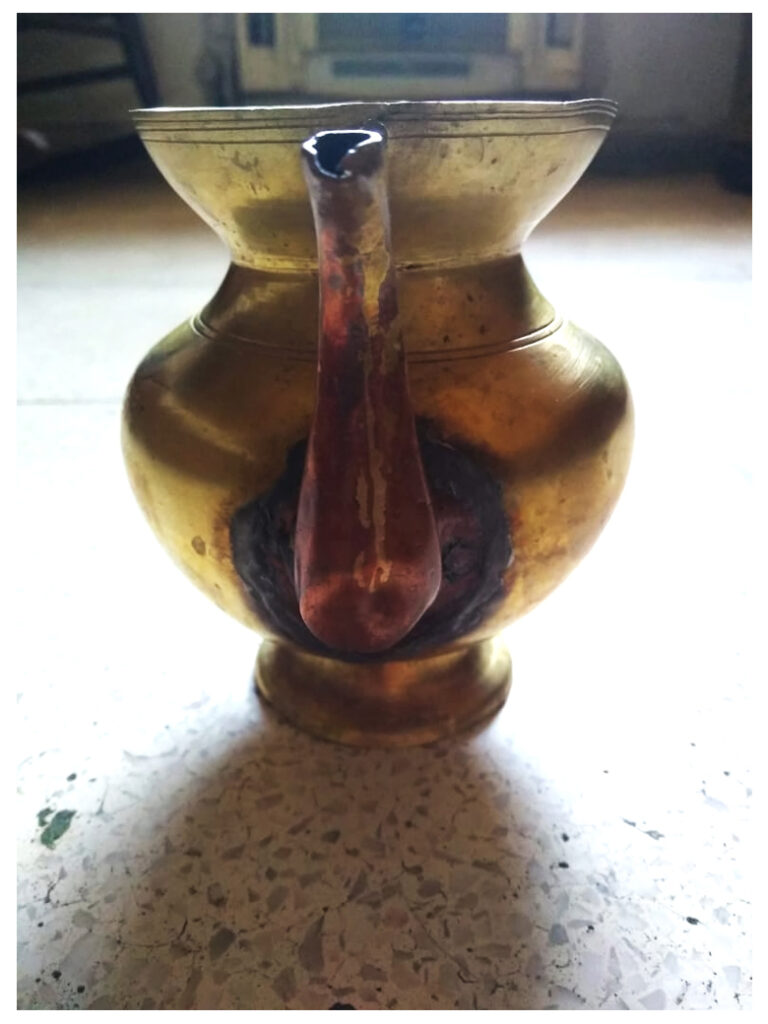
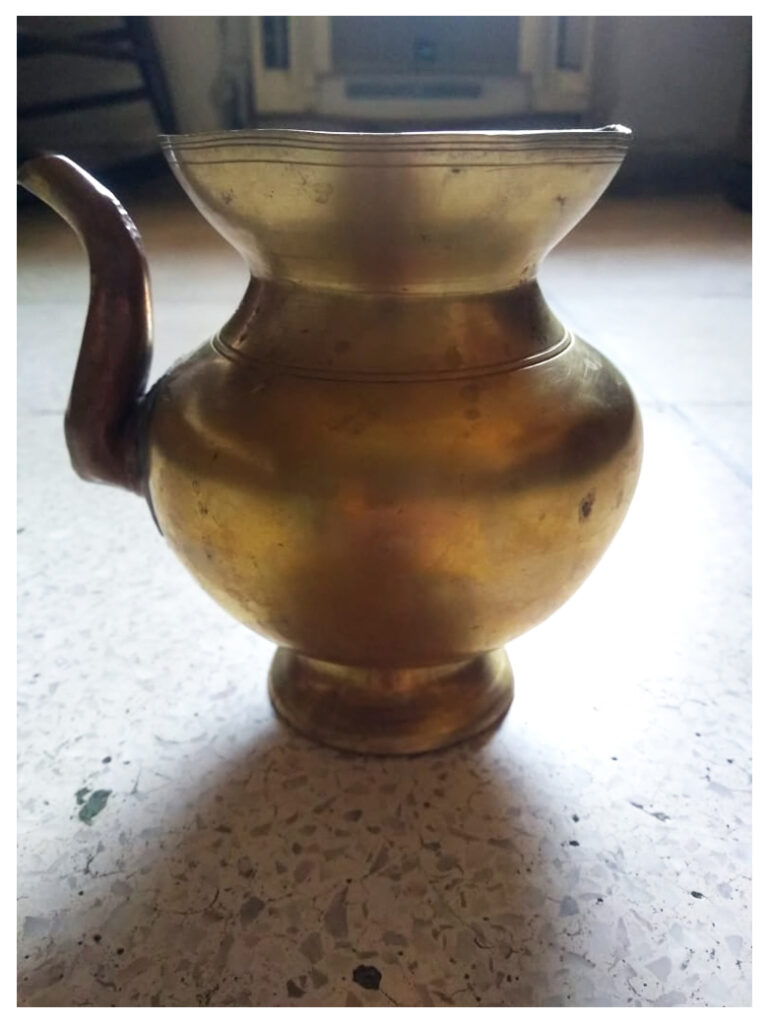
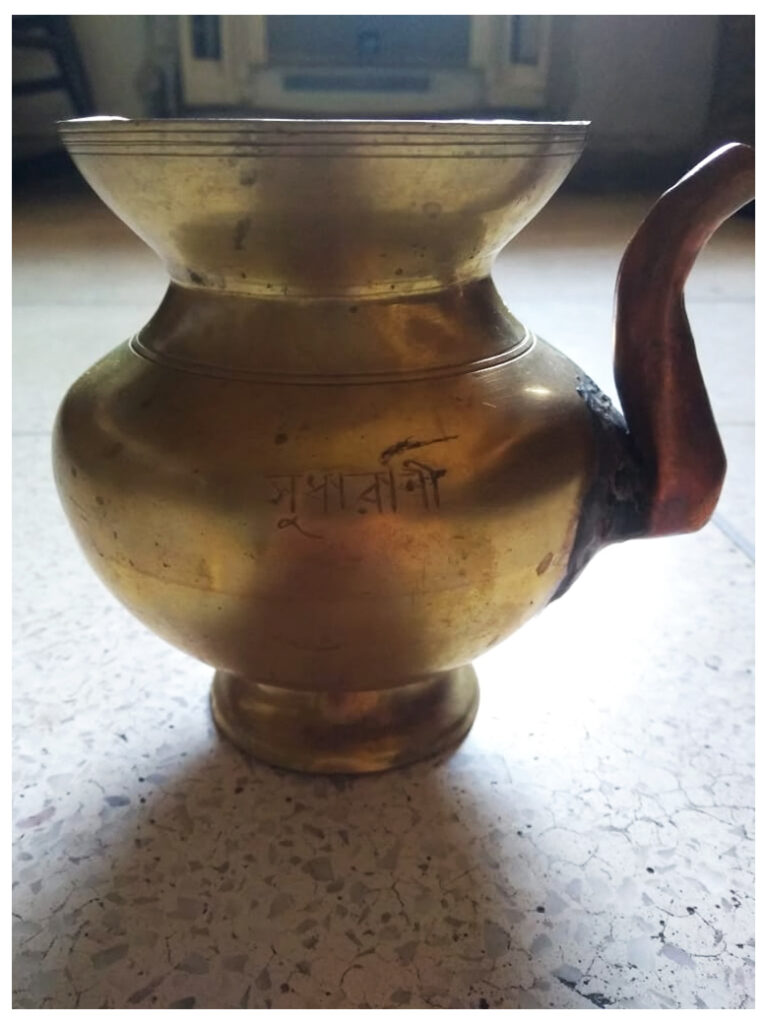
The snake of the shivling is cast in pure gold with a big ruby stone studded into it. My grandmother once told me that when she was young, goldsmiths would often be called to the home to show their designs and catalogues for the family members to choose from. The chosen design would then be made within the walls of the house itself. This heirloom shivling is still used in for daily worship.
The oil lamp stand or pilshuj is made of brass and is ornately carved with flowers and a peacock; quite distinct from the usually simple looking pilshuj. It has a bowl at the top with a hole covered by a concave seal. The bowl is supposed to be filled with water which makes the lamp burn throughout the night.
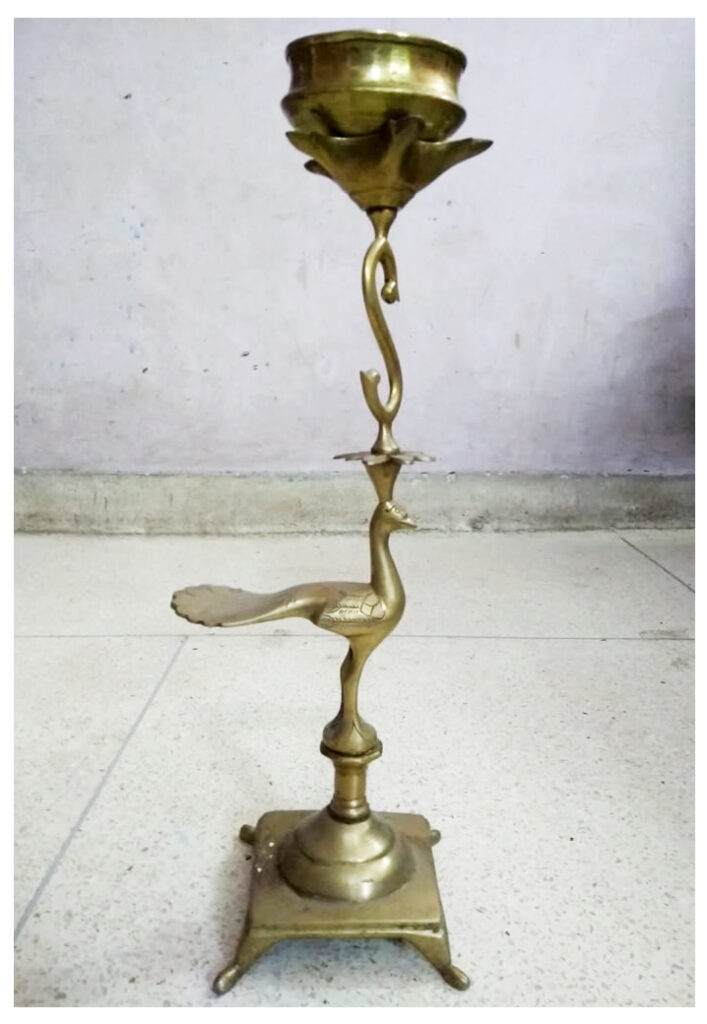
The most special part of the collection is the paan box and the kamandulu because they have my great grandmother’s name in Bengali engraved onto them and were used by her daily. Getting names engraved into belongings was a very common practice back then in order to personalized objects, particularly those of utility. The paan box was once an ubiquitous item in households across Bengal and was an indispensable part of the daily life of the residents. It carried the various ingredients and betel leaves in small bowls. Eating paan, in turn, was a habit and addiction of many Bengali housewives. They would gather with other neighbourhood women everyday at noon and gossip while making and eating paan. Today, sadly many of these aforementioned objects have outlived their original purpose- the paan box is used as a medicine box, and the kamandulu, used traditionally by my grandmother to fetch and store water daily from the river Ganges, is now used only in simple home pujas.
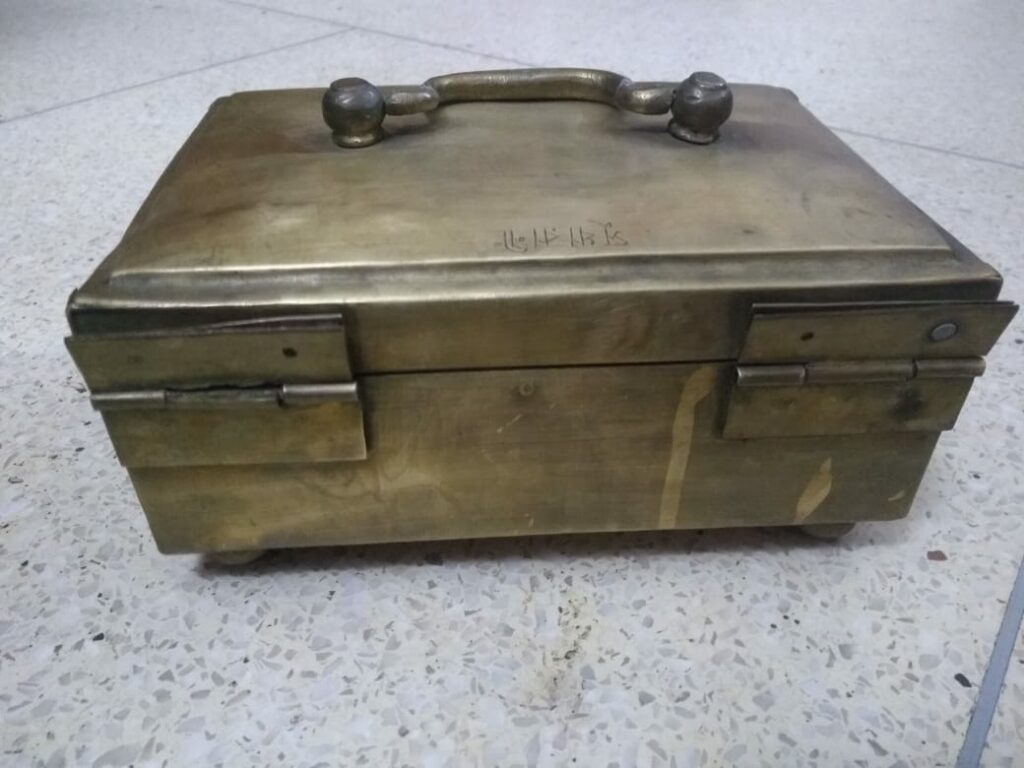
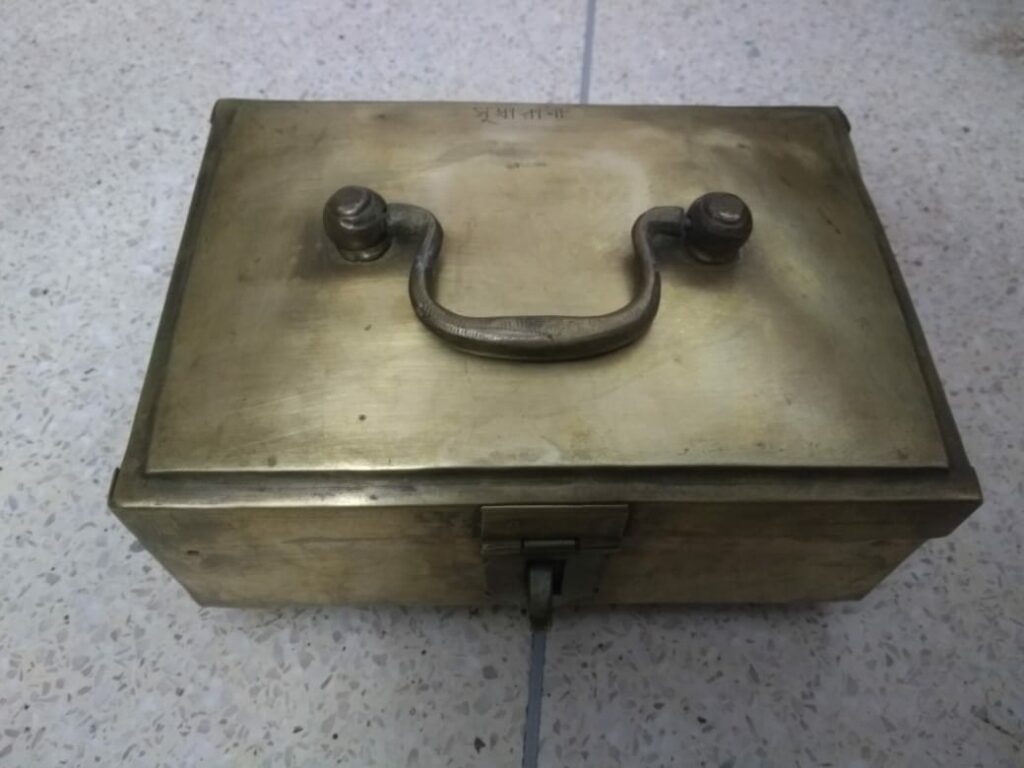
A kajol lota is equivalent to the north Indian surmedani. It has a sliding lid which was opened and held over a lamp until the black soot got collected in it in which the oil was later mixed. It is also tradition amongst Bengali brides to hold a kajol lota along with a gaachh kouto, sindur box during pre-wedding rituals. Both the kajol lota and the gaach kouto are both believed to be auspicious items.
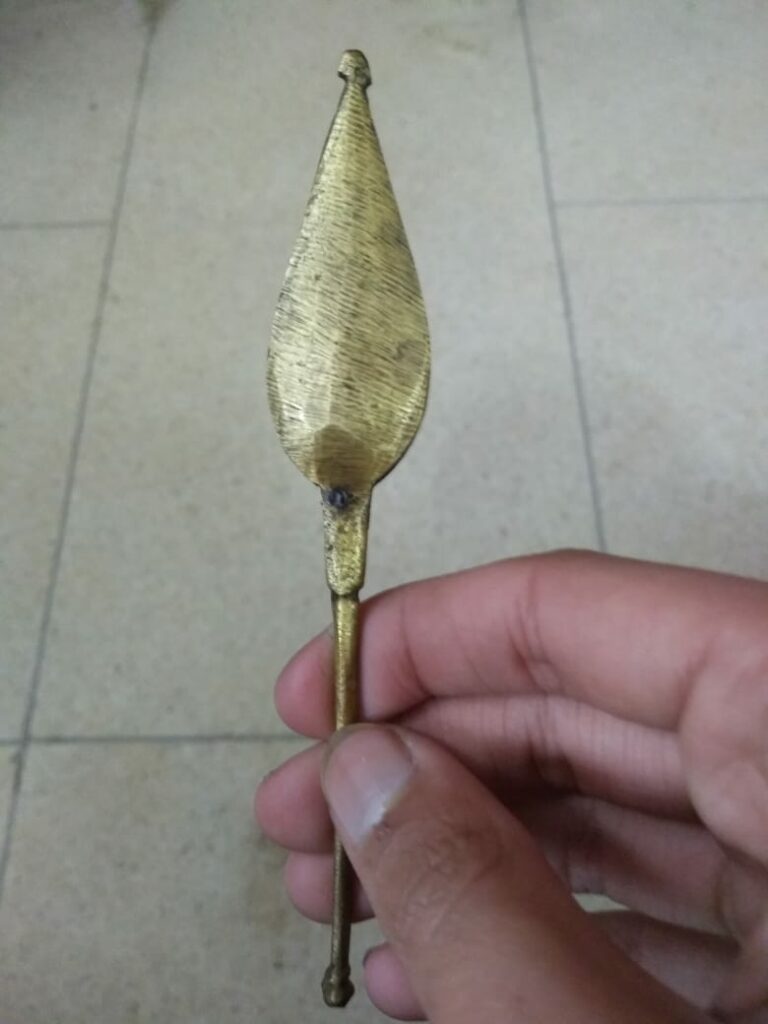
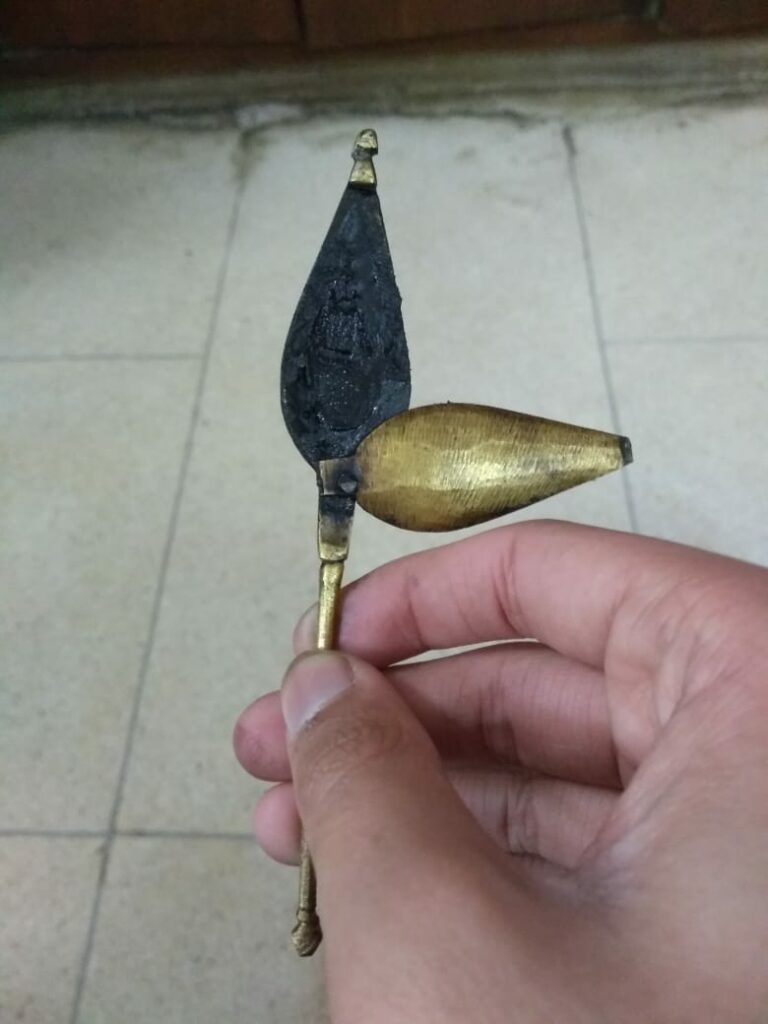
My grandmother’s aged collection of objects also includes some bowls, cups and plates made of stone. One of these stone utensils is a stone mug with my great-grandfather’s name, Dr. U. P. Basu, engraved on it. This was very close to my grandmother’s heart and she bought it along with her to cherish the time spent with her father. Stones are non-reacting unlike utensils made of metals and were thus used to store sour or acidic substances.
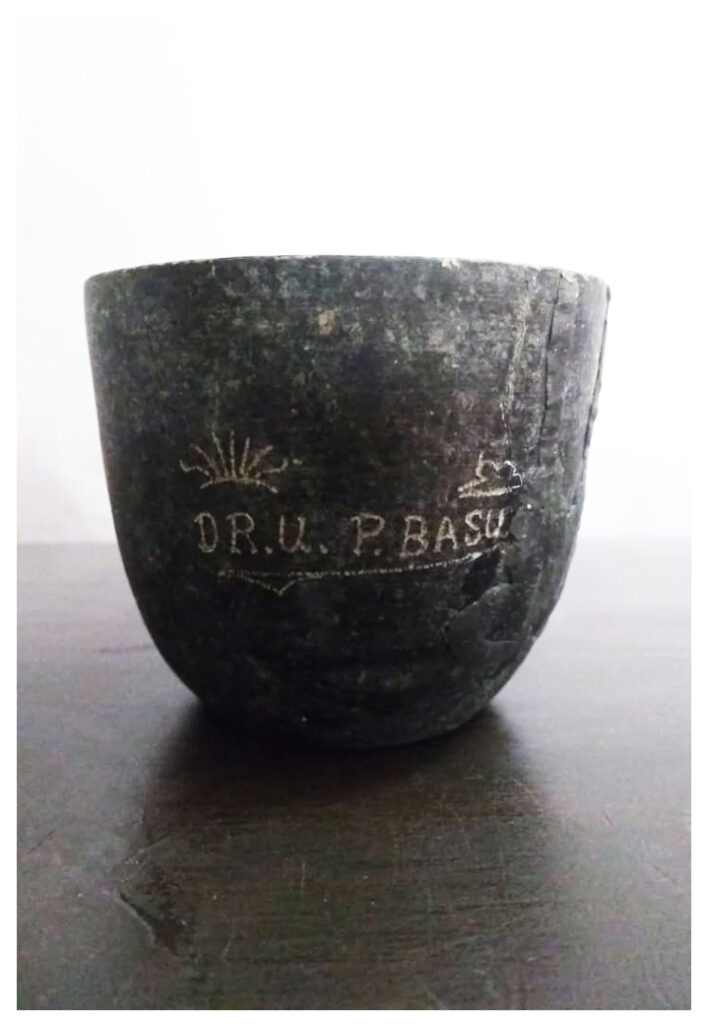
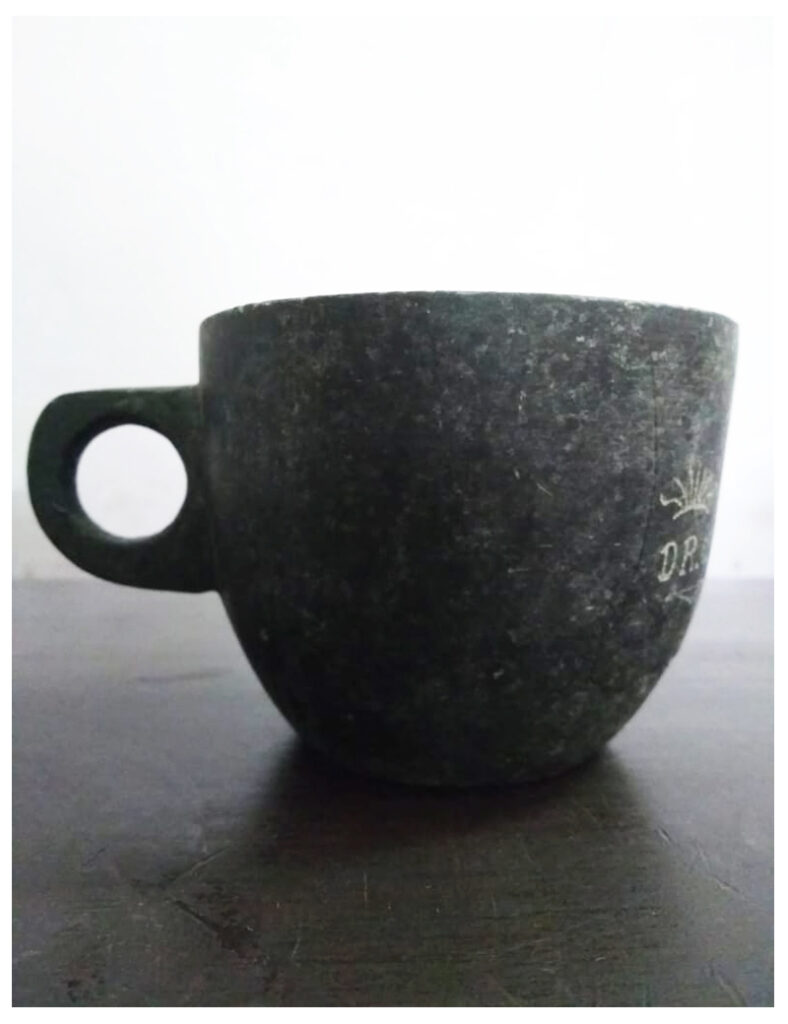
The items closest to my heart in this collection, which are also the oldest, are the Kantha blankets. Bengali housewives did not like wasting or throwing away things so they often invented interesting ways to reuse objects. One such creation was the Kantha. Parts of old sarees were stacked and sewn together to make blankets, embroidered with beautiful patterns or sometimes with images signifying events from the life of the person who made it. The patterns were all embroidered with a simple running stitch. To make Kantha blankets was a time consuming process, as they were stitched together using the old borders of sarees no longer in use, and it often took a long time to collect enough borders. These were made by girls and women in the family during their leisure time. They were also shown to boys who came to see girls for marriage, as a marker of the young woman’s skills.
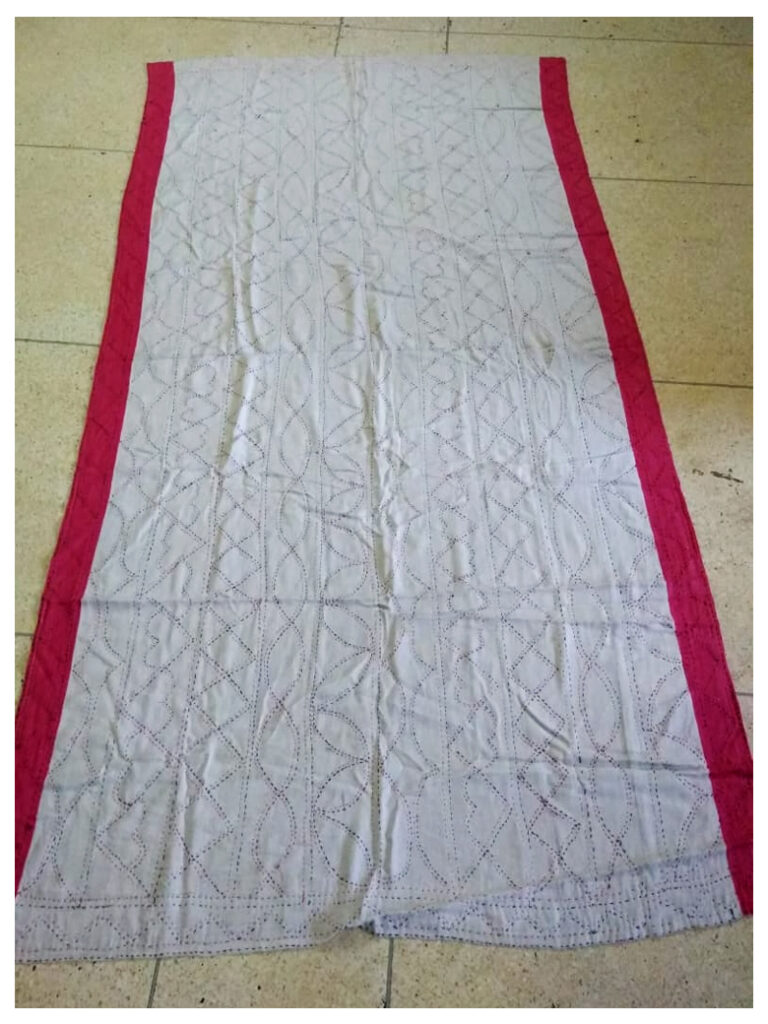

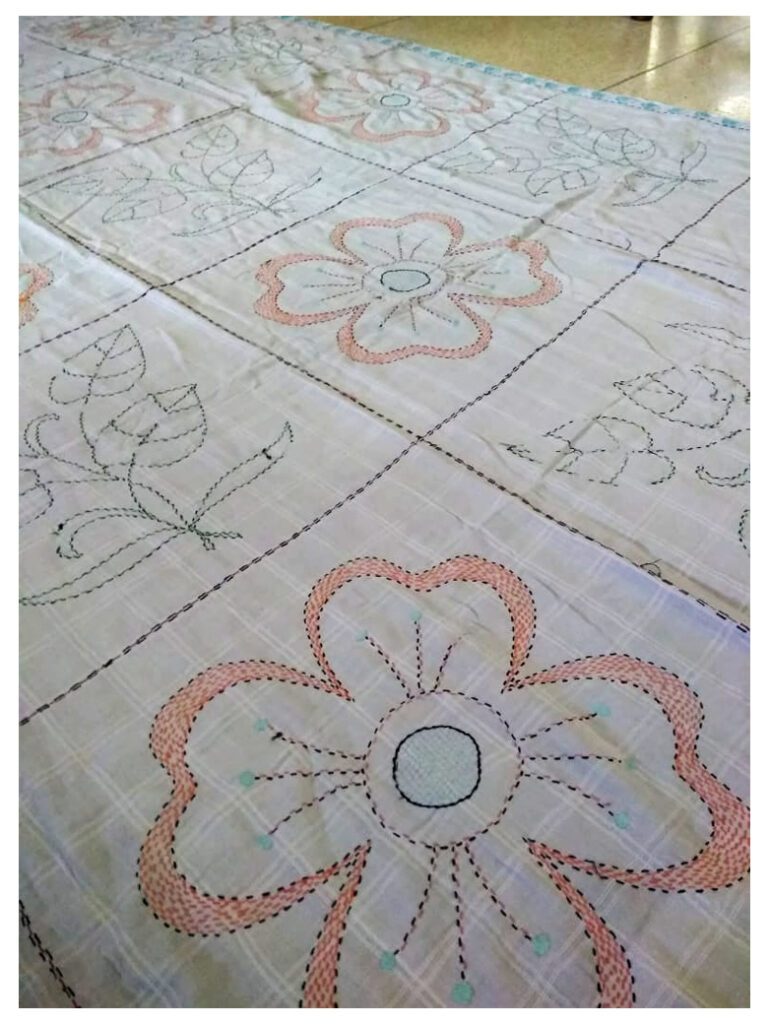
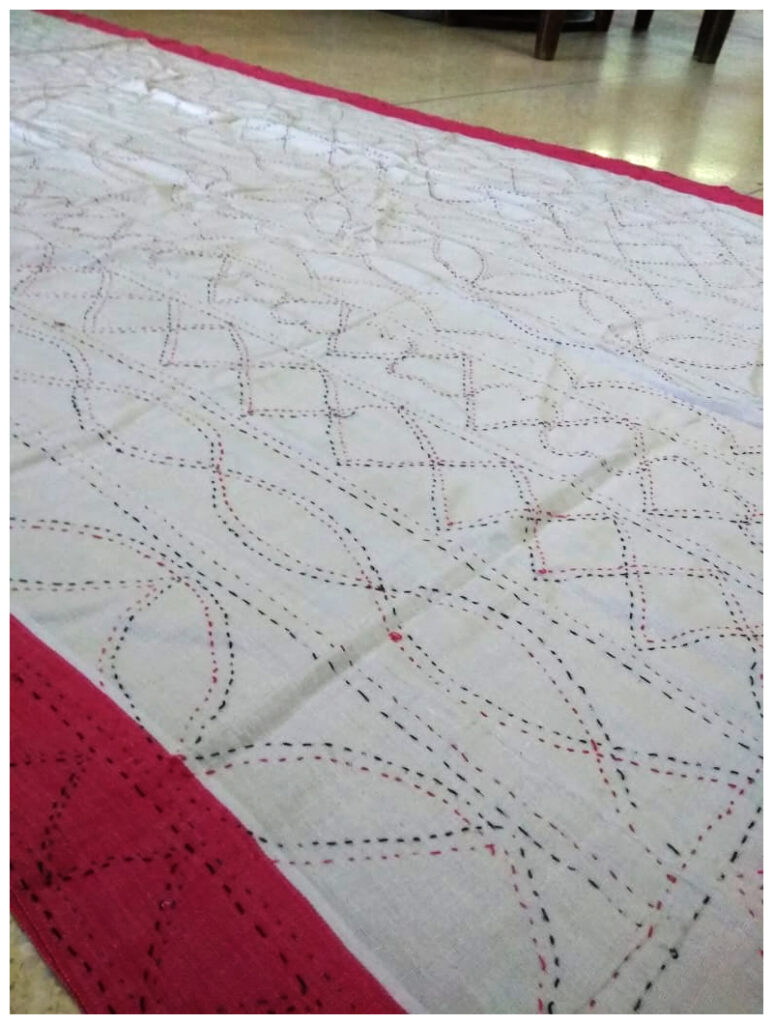
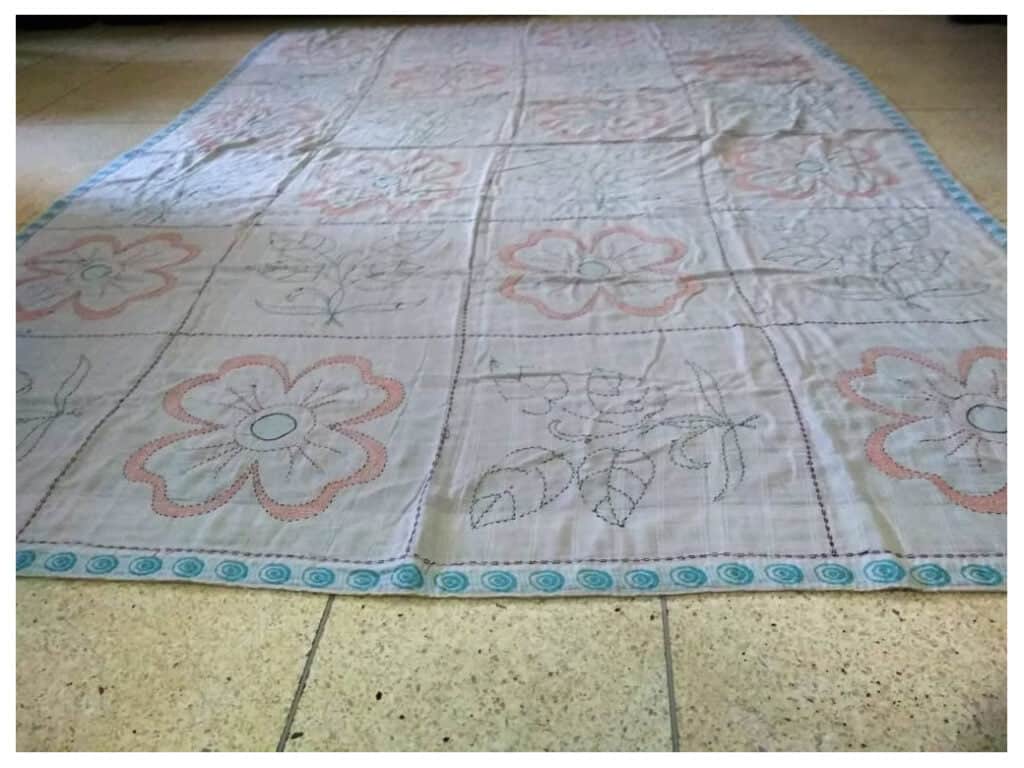
These Kanthas in particular were made by my great-great-grandmother. Nobody remembers her name now but everyone fondly called her thamma. Since she had no other family after the Partition, she lived with my great grandmother, her daughter. I remember my own grandmother covering us grandchildren with these blankets when we were babies, and signing Bengali lullabies to help us fall asleep. The belief was that old cloth comforted the young, but I always thought there was more to it. Though I personally never met my great-great-grandmother, these blankets gave my childhood her touch. They passed her hand, her history and the time that she would have taken to lovingly stitch these, seamlessly into my childhood. Perhaps these unassuming, recycled fabrics are another way to hold onto our pasts.
Most of these objects are over a 100 years old and their exact age is unknown. My grandmother took great care of these objects and passed them down as heirlooms. Some of the utensils like the pilshuj and kamandulu are still used for pujas but the other objects like the kanthas, kajol lota, stone utensils are kept carefully in my house, taken care of by the family, and only occasionally taken out to be cleaned. These objects reminded my grandmother of her beloved family. Through them, she could cherish the memories of her maiden days .
Although those women of my family are long gone their legacy and stories survive through these objects.
